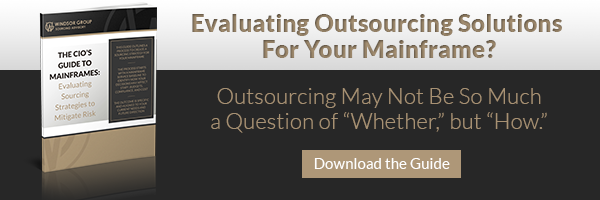 What are your outsourcing goals? What are your overall corporate goals? They both play a vital role in helping you choose the best mainframe outsourcing pricing model. Beyond simply paying for a list of services, how you finance your outsourcing solutions can help achieve broader growth and development outcomes.
What are your outsourcing goals? What are your overall corporate goals? They both play a vital role in helping you choose the best mainframe outsourcing pricing model. Beyond simply paying for a list of services, how you finance your outsourcing solutions can help achieve broader growth and development outcomes.
The permutations of mainframe outsourcing are almost limitless, and the same is true for pricing. In both cases, your job is to tailor an arrangement that meets current needs and aligns with your long-term goals. Negotiating the right pricing is part of negotiating SLAs and other contractual factors that will define your outsourcing experience. But you have to know what you want to accomplish before you can determine the best way to get there.
You can save money, thanks to scalable services and costs that are based on what you get. You can also design your outsourcing solution to drive innovation, develop new enterprise-specific processes, even develop new products you and your provider can market to others.
Pricing models abound.
Hybridization is the becoming the norm, just as it is with mainframe outsourcing solutions. Your enterprise is unique, so there’s no such thing as The Right Pricing Model, any more than there is a single transformation solution that’s right for every enterprise. And some types of solutions lend themselves more effectively to different pricing arrangements.
That complexity makes your task more difficult. But you can create your own pricing model by combining the ingredients most relevant for you:
- Traditional consumption-based fees.
- Incentives. You can reward your provider for exceeding performance benchmarks or for higher-level contributions that increase your ability to save time or money. You’re getting greater value from the relationship, and you’re both sharing in that success.
- Disincentives. You can penalize performance that doesn’t meet SLA minimums, which ensures you aren’t paying for something you’re not getting. The real value here is motivating your provider to stay on top of their game.
- Shared risk-reward. In effect, you can go into business with your provider to create new services, products or solutions. This could lead to a new revenue stream for both of you, but this scenario requires that you share the potential downside, too – development costs that you may never recoup.
Exactly what elements you choose, how those puzzle pieces fit together and how they relate to your corporate goals will determine pricing model effectiveness. No matter what the details, the best mainframe outsourcing model will be based on clear expectations and well-targeted metrics to evaluate performance. Vagueness leads to misunderstanding, performance failure and frustration. And it will probably cost you monetarily, too.
To some extent, your preferences regarding pricing and payment arrangements will dictate which provider is your best choice. And they may offer additional ideas for you to consider. In the end, though, the decision is yours because it’s your budget and your company’s future.
As with all things relating to mainframe operations these days, flexibility is the key to success. The best mainframe outsourcing pricing model will not only serve you well financially, it should serve to strengthen the ongoing relationship you have with your provider. You’re not just purchasing a product, you’re creating a joint venture of sorts. You’re in this together, and pricing should reflect that.
Remember your mainframe outsourcing contract is a guide, not a static device. Your goal is agility, especially since you can’t predict the future. And that means pricing may have to roll with change, just like the range of services you receive. Saving money is good. But only if your mainframe outsourcing package assures the same quality, reliability and security you’ve come to expect from your legacy systems and assures you a financially sound pricing model.
Photo Credentials: DonkeyHotey via Flickr


